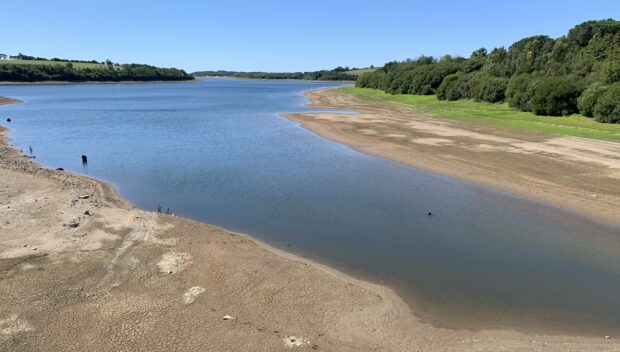
With summer approaching and after several months of dry weather, many are wondering if the country is facing a potential drought. After an exceptionally wet 2024, this year has taken a dramatically different turn.
From floods to drought concerns
There’s a reason we like to talk about the weather in this country; there’s always something to talk about. Whilst last year brought much more rainfall than average, with parts of Oxfordshire and Gloucestershire experiencing their wettest year on record, this year has pivoted sharply:
- Rainfall data from the Met Office shows that this was the driest February to April since 1956 in England.
- It has been the driest March across England since 1961, with only a quarter of the long-term average (LTA) recorded in England.
- Rainfall for England in April was half of the long-term average
- It has been particularly dry in northern England:
- April was the fourth driest across north-east England on record dating back to 1871
- Parts of Cumbria and Northumbria have had their driest start to the year since 1929
- Soil moisture levels have decreased significantly
- River flows dependent on rainfall in hard rock (also known as impervious) areas, have fallen sharply
- Wildfire incidents are above average due to hot, dry conditions
Current water resource status
The situation varies significantly by region. In general:
- Central and northern England: Rivers and public water supply reservoirs are lower than normal, with levels dropping earlier than typically expected
- Southeast and eastern England: River flows remain generally normal, supported by healthy groundwater reserves
How is the Environment Agency is responding
The National Drought Group, chaired by the Environment Agency, met on 7 May to coordinate the strategic management of drought across government, regulators, industry and stakeholders. Key actions the Environment Agency is taking include:
- Enhanced monitoring of river, groundwater and reservoir levels
- Close coordination with water companies to implement statutory drought plans when necessary
- Enforcement of water abstraction licence compliance
- Environmental incident response for low river flows
- Management of water transfers
- Publication of irrigation forecasts for the agricultural sector
- Preparing guidance for fishery operators
What are water companies doing?
Water companies have drought plans to manage periods of dry weather and drought. These plans set out the actions a water company should take at different stages of a drought. Such actions include increasing the communications to customers, helping customers use water wisely during these dry periods as well as taking action themselves by reducing leakage, optimising their supply network and, if needed, implementing customer restrictions through temporary use bans (often referred to as hosepipe bans).
Whilst companies must take action in a drought, they are also planning to increase their resilience to more severe droughts. Their water resources management plans set out how they will manage water supply and demand over 25 years. The latest set of plans have identified the need to reduce demand for water, such as reducing leakage and encouraging customers to use less water, and increasing supply through infrastructure such as reservoirs.
The water industry has committed to reducing leakage by 50% by 2050 and the Environment Act 2021 sets a target of reducing domestic water use by 20% by 2038. By 2050, water companies are also planning:
- 9 new desalination schemes
- 10 new reservoirs and 1 reservoir enlargement
- 7 new water recycling schemes
- multiple new internal and inter-company transfers to share resources
For more details please take a look at - A summary of England’s revised draft regional and water resources management plans - GOV.UK
What is a drought?
Drought is caused by a period of low rainfall. The impacts of a drought on people, the environment, agriculture and businesses will vary. Some droughts are short and intense like a hot, dry summer. Others develop over multiple seasons. The main types of drought which can occur separately or together are:
- Agricultural drought: Insufficient rainfall and soil moisture which affects crop production and farming practices
- Environmental drought: Ecological and environmental impacts from lack of rain
- Water supply drought: Lack of rainfall means potential restrictions on water customers and/or further water being needed from other sources or the environment
At the Environment Agenda we monitor drought indicators such as rainfall, river levels, reservoir storage and environment indicators. Based on this information we will then decide which of the following classifications apply to the current situation:
- Prolonged dry weather
- Drought
- Severe drought
- Recovering from drought
These classifications then inform what actions we and others should take such as activating area drought plans and imposing restrictions on water abstraction
Demand for water is set to increase as we respond to population growth, the impacts of climate change and new demands for energy production. In June, the Environment Agency will release an update to the National Framework for Water Resources proposing additional actions and expectations for different sectors to improve water supply resilience and a better protected water environment.
What you can do
With reservoirs already lower than normal we can all use water wisely. Actions you could take include the following:
- Install a rain butt to collect rainwater
- Fix a leaking toilet – leaky loos can waste 200-400 litres a day
- Use water from the kitchen to water your plants
- Take shorter showers
If you have a water meter, saving water will also save you money!

3 comments
Comment by Margot Hardman posted on
It is encouraging to read the strategy - I was wondering whether there will be transportation of water from Kielder Reservoir to farms across Northumberland who are in danger of losing their crops? Having read the reservoirs are also low what is the likelihood of this?
many thanks
Comment by Peter Drake posted on
The use of the Kielder Water reservoir is an excellent idea. The body of water is huge and could conceivably help to alleviate drought in a large part of the north of England. This and other strategies such as hosepipes being banned would head off any problems
Peter Drake classroom science teacher Hexham Northumberland UK
Comment by m davies posted on
Their plan is to ask customer to reduce water usage?? Thats not a plan, that's a wish. In fact most of their planning is a wish list. No new reservoirs or desalination until 2050! We're going to need it long before then. Also stop suppressing rainfall using the unmanned air vehicle aerosol spraying. This will start to look deliberate soon when drought leads to food shortages and knock on effect to food prices.